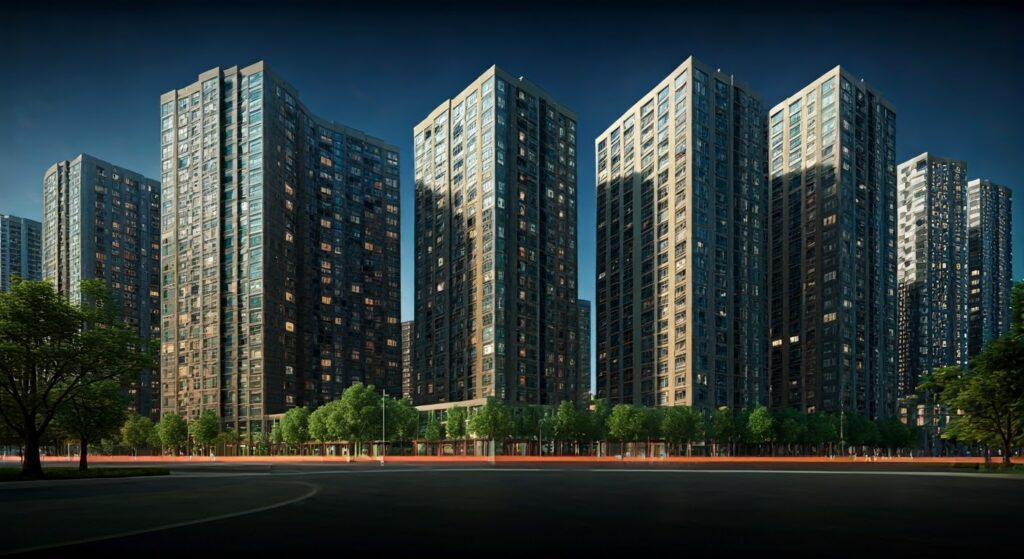FLATTED DEVELOPMENT
Saturday Brain Storming Thought (277) 31/05/2025
Flatted Development, or the construction of apartment buildings, is a significant aspect of urban development in Maharashtra, particularly in cities like Mumbai, Pune and Nagpur
The Maharashtra Government has actively promoted this type of development through various initiatives, including affordable housing schemes and redevelopment projects
Key Aspects of Flatted Development in Maharashtra
1) Affordable Housing
The state government has set ambitious targets for affordable housing, aiming to generate 35 Lakh units by year 2030
2) MHADA (Maharashtra Housing and Area Development Authority)
MHADA plays a crucial role in providing affordable housing through lottery schemes, especially in cities like Mumbai and Pune
3) Redevelopment
The government encourages redevelopment of old buildings and slum areas, often using a cluster redevelopment approach
4) Incentives
Incentives are offered to developers and investors to encourage participation in housing projects, including those related to slum rehabilitation and stalled projects
5) Single-Window Clearance
The government aims to streamline the approval process for housing projects through single-window clearances to facilitate ease of doing business
6) New Housing Policy
The state has a new housing policy in place that emphasizes affordability, sustainable development and the use of new technologies in construction
7) UDCPR (Unified Development Control and Promotion Regulations)
This regulation standardizes urban development across the state and plays a role in regulating flatted development
8) Housing (Regulation and Development) Act, 2012
This Act regulates the construction, sale, management and transfer of flats in Maharashtra
9) MahaRERA (Maharashtra Real Estate Regulatory Authority)
MahaRERA regulates real estate projects, including flatted developments, ensuring transparency and protecting buyers rights
Key Takeaways of Flatted Development
1) Pattern of development is based on plot of larger size as compared to plotted development
2) In Flatted Development, land deld in joint ownership with large number of owners, to promote group housing
3) Pattern of development is high rise – generally going 4 or more stories
4) Land utilisation is of higher order, with smaller area going under roads / open spaces
5) Population/Housing density is higher, due to joint ownership, depending upon combined resources and combined effort to providing dwelling to all members/landowners
6) Open spaces are large in areas, available as integral part of housing, held in joint ownership, to be used by all the residents, reduces need for making provision of large open spaces at the neighborhood level
7) Cost of construction is generally low, due to high rise and repetitive design of dwelling units and common services
8) Social sustainability is high, due to higher social interaction based on community living
9) High degree of safety and security, due to community living
10) Pattern of Living promotes community living, leading to higher social interaction
11) Low design flexibility due to multiple units and joint ownership, leading to repetitive nature of design of dwelling units, Uniformity of design is the crux
12) Low maintenance cost due to collective maintenance by society created by the flat owners, fixed charges paid by each flat owner, cost effective considered life cycle cost
13) Creation of housing stock is high, due to construction of all flats in one go, higher level of land utilisation
14) Flatted Development makes housing cost-effective and affordable due to shared land cost and lower cost of construction, best method to create large housing stock
15) Flatted Development has high sustainability, due to provision of common facilities and basic services as part of group housing
16) Flatted Development offers large options for using state of art construction technogies to promote cost and material efficiency
17) Flatted Development offers large cost-effective options for promoting energy efficiency, rain water harvesting, ground water recharging and solid waste management
18) In Flatted Development ground coverage is low as compared to plotted development, FAR in some cases changes with the width of approach road
19) Parking norms always defined for Flatted Development, depending on the size and category number of dwelling units
20) Flatted Development promotes high degree of affordability
21) Flatted Development is the best option to increase housing supply and overcome the housing shortage
22) Flatted Development has a less privacy due to community and joint living
23) Flatted Development has common problems of maintenance/unkeep are generally ignored/neglected/delayed
24) Flatted Development has probability of large social conflicts
25) Flatted Development is Community/society based management
COMPILED BY:-

Er. Avinash Kulkarni
9822011051
Chartered Engineer, Govt Regd Valuer, IBBI Regd Valuer



